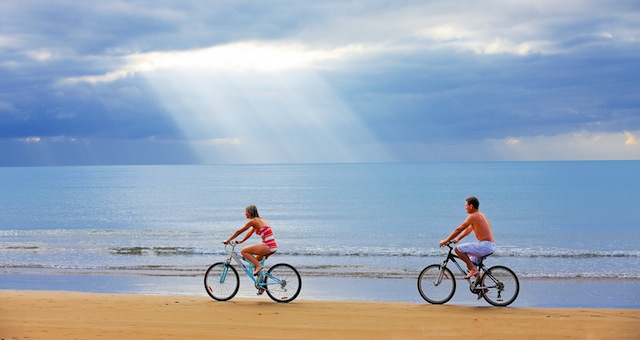Softening commodity prices and slowing mining investment are likely factors in a sharp fall in demand for short-term accommodation in Australia’s mining and resources hot spots in the December quarter of 2012, the latest edition of the TTF-Hostplus National Accommodation Barometer shows.
The Barometer tracks the performance of key accommodation sector metrics across the capital and major cities and iconic tourism destinations, and includes data on three destination types: beach holidays, mining and resources hot spots, and wine tourism regions.
Tourism and Transport Forum (TTF) Australia Acting Chief Executive Trent Zimmerman said occupancy levels fell in all four mining and resources hot spots tracked.
“Occupancy fell more than 10 percentage points (pts) in Mackay and Gladstone compared to the same quarter a year earlier,” Zimmerman said. “With falls of 4.9 pts in the Pilbara and 2.4 pts in Kalgoorlie.
“Overall, Revenue Per Available Room (RevPAR) in mining and resources hot spots fell 10.0 per cent with occupancy down 7.1 pts compared to the same period 12 months ago.
“This points to a change in approach from mining companies who are looking to rein in expenditure.
“RevPAR has fallen 19.5% in Mackay where room rates have dropped 7.9% even though room stock has also declined.
“It will be important to ensure there are demand drivers in place in locations like Mackay to ensure these accommodation providers are sustainable after the mining boom subsides, otherwise the jobs they support will be at risk.”
By contrast, Hostplus Chief Executive Officer David Elia said the Barometer shows a strengthening of demand for beach holidays.
“Occupancy levels in our Beach Holidays destinations rose 2.6 pts in the December quarter, with room rates up to levels not seen since before the GFC, driving RevPAR up a healthy 11.3%,” he said.
“We have also seen a 7.5% rise in RevPAR on the Gold Coast, where occupancy rose 2.9 pts, and positive performance in Cairns, where RevPAR jumped 16.7% for the quarter, with occupancy up 6.1 pts, capping off the city’s strongest year since before the GFC.
“This is a function of the continuing recovery in domestic travel and slowing growth in outbound travel by Australians, as they adjust to the high Australian dollar as the new normal.”
However, Zimmerman said there was mixed news for other destinations.
“Among our Iconic Australian Destinations, Kangaroo Island enjoyed its best ever December quarter results, with a 5.0 pt jump in occupancy and RevPAR up 12.7% compared to the same period in 2011,” he said.
“However, Kakadu Arnhem continues to struggle, with occupancy down 2.3 pts and RevPAR down 9.6% compared to the December quarter a year earlier, despite a reduction in room stock.”
Demand for accommodation in Australia’s capital and major cities remains strong and stable at 80.8%, however, Brisbane and Perth saw falls in occupancy of 4.3 pts and 2.2 pts respectively, suggesting a downturn in resources-related travel.
Occupancy also fell in Canberra (-6.3 pts) as governments cut back on travel expenditure, leading to a 10.0% fall in RevPAR.
Other highlights include Port Douglas recording the strongest growth of any market examined for the Barometer in the December quarter, with RevPAR increasing by 30.2% based on solid occupancy growth and a 13.4 % increase in room rates.
The Whitsundays also recorded growth in room rates and occupancy, resulting in a 10.1% increase in RevPAR.


